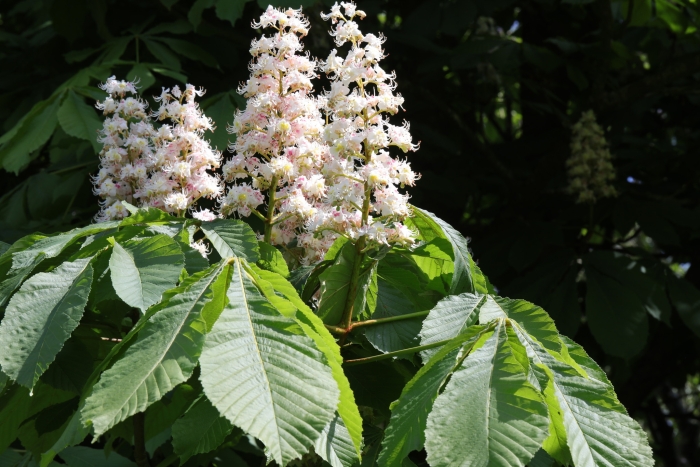Horse Chestnut
(Aesculus hippocastanum)
Horse Chestnut (Aesculus hippocastanum)
/
/

Stephen James McWilliam
Public Domain













































































Estimated Native Range
Summary
The Horse Chestnut is celebrated for its beautiful spring flowers and is widely planted in temperate regions around the world, including Ireland, Great Britain, and New Zealand. It is often found in urban settings such as parks and along streets due to its tolerance of pollution and its ability to provide dense shade. While it prefers full sun to part shade, it is adaptable to a range of soil drainage conditions. However, it can be susceptible to leaf blotch, horse chestnut leaf miner, and bleeding canker, which may require management. Additionally, it is considered potentially invasive in some regions, such as parts of the United States, so gardeners should consult local guidelines before planting.CC BY-SA 4.0
Plant Description
- Plant Type: Tree
- Height: 50-75 feet
- Width: 40-65 feet
- Growth Rate: Rapid
- Flower Color: White
- Flowering Season: Spring
- Leaf Retention: Deciduous
Growth Requirements
- Sun: Full Sun, Part Shade
- Water: Medium
- Drainage: Fast, Medium, Slow
Common Uses
Bee Garden, Bird Garden, Butterfly Garden, Deer Resistant, Drought Tolerant, Hummingbird Garden, Rabbit Resistant, Showy Flowers
Natural Habitat
Balkan mixed forests, deciduous woodlands, forest edges, and grasslands
Other Names
Common Names: Horse-Chestnut , Common Horse Chestnut , Hestekastanie , Gewöhnliche Rosskastanie , Rosskastanie , Castaño De Indias , Balkaninhevoskastanja , Marronnier , Marronnier D’Inde , Marronnier Commun
Scientific Names: Aesculus hippocastanum , Aesculus hippocastanum f. memmingeri , Hippocastanum vulgare , Aesculus hippocastanum var. incisa , Hippocastanum aesculus , Aesculus hippocastanum f. beaumanii , Aesculus hippocastanum var. beaumanii , Aesculus asplenifolia , Aesculus castanea , Aesculus heterophylla
GBIF Accepted Name: Aesculus hippocastanum L.